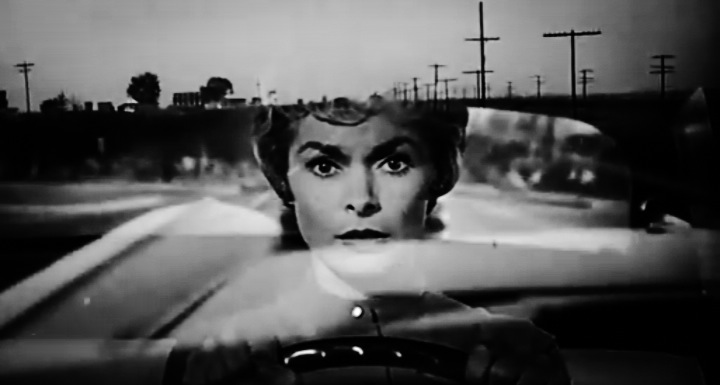FIVE important examples of cinema from the era of silence to the introduction of dialogue through sound.
METROPOLIS (1927) - FRITZ LANG
German-expressionist cinema at its finest, Metropolis is a silent, science-fiction gamut ordained in a futuristic dystopia. Set during the year 2026, in a technicized world governed by Joh Frederson, this is what I esteem to be Wiemar cinema's most paramount product. Beyond its highly ambitious concept, Metropolis is at its core, a visual predilection relaying the effects of modern technology on man. The film follows a silent-stylus, which contrasts a bleak working underclass with grandiose Futurist sets, not unlike the work of Italian architect, Antonio Sant'Elia. The machine-human (Maschinenmensch), robot-double, and her evil gynoid twin portrayed by Brigitte Helm is perhaps one of cinema's most iconic creations - the film is worthy of viewing if only for her gradual metamorphosis alone. Metropolis extends beyond the boundary of timelessness in the rubric of cinema, and continues to engage and enthrall contemporary audiences with its unconventional special effects, futuristic thematic and stylistic visual dialogue.
MESHES OF THE AFTERNOON (1943) - MAYA DEREN
Maya Deren's Meshes of the Afternoon is an avant-garde, experimental short film which weaves a thematic tapestry between surrealism and the inner reflections/machinations of the self. The film opens with a shot of a disembodied hand, gently placing a flower onto a paved pathway. This gentle allusion to detachment sets the tone for the short which sees the central figure (Deren hersef) pursue a hooded, mirror-faced figure dressed in black. Throughout the short film, Deren utilises filmic technique such as repeated shot-sequences and slow motion to challenge perceptions of reality and the subconscious. Throughout the surrealistic-short, you are intended to discern what is blurred beyond reality and what is in fact 'real' - from keys, flowers and the more sinister knife which we see reappear and disappear. The use of mirrors cleverly ties into the theme of reflectiveness, wherein Deren herself claims of the film - " [that] it reproduces the way in which the subconscious of an individual will develop, interpret and elaborate an apparently simple and casual incident into a critical emotional experience."
DOUBLE INDEMNITY (1944) - BILLY WILDER
When one thinks about the finest of film noir, one should look no further than Billy Wilder's Double Indemnity. The film's influence extends beyond the genre, and surrounds itself around its two protagonists Walter Neff (Fred MacMurray) and Phyllis Dietrichson (Barbara Stanwyck). Stanwyck portrays a provocative, vaudeville keen on committing the ultimate crime - the murder of her husband, whereby claiming his wealth of monetary fortune. She enlists the assistance of Walter Neff, an insurance salesman and throughout the process of their exchange, she lures him into her seductive web of hopes and promises. Although at times the dialogue in this noir/murder/romance film can come across as "cheesy," its pace, direction and editing is nothing short of Wilder's flawlessness. The character development and dynamic alludes to films which lay outside the genre - I'm thinking the likes of Deckard and Rachael in Ridley Scott's Blade Runner (1982). The film contains a large amount of narration via monologue, but who could ever forget that icy elocution so venomously uttered by Stanwyck to a seemingly love-stunned Walter Neff? - "No, I never loved you Walter -- not you or anybody else. I'm rotten to the heart. I used you, just as you said. That's all you ever meant to me. Until a minute ago, when I couldn't fire that second shot..."
THE FACE / Ansiktet (1958) - INGMAR BERGMAN
In what is declared as Ingmar Bergman's most prized personal work, he delivers this gothic-style 19th century tale centered on a struggling artist and his mesmerist troupe, in the film Ansiktet. Volger, the lead character played by Max Von Sydow portrays a magician who relies on his professional means to disguise facets of his true character unto himself and others. He leads his companions to the border of Stockholm where he is met by Dr.Vergerus, a strange yet alluring physicist enamored with the conception of death, In many ways, Bergman draws into themes relating to the role of the artist and the constant power-play relating to having to 'prove oneself' worthy of that title. This is masterfully done in true Bergman-style, from the wonderfully visual art direction of his assistant Gunnar Fischer to the aesthetically beautiful leading women (such as Ingrid Thulin) he purposefully selects to allay visual diversion to the film's bleak surroundings.
PSYCHO (1960) - ALFRED HITCHCOCK
Touted as Alfred Hitchcock's most iconic film for its unconventional plot progression and its thriller/horror/slasher style, Psycho is undoubtedly cinematic art at its finest. The film seems to imbue viewers into the realm of its protagonist, Marion Crane, who is on the run after stealing a large sum of money from her employer. We follow Marion on screen as she drives through a stormy evening and makes a detour into the Bates Motel where she checks in to stay the night. There she meets its young owner, Norman Bates - an outsider and hermit who we soon learn is veiling a dark secret. Hitchcock masterfully utilities the use of editing, sound and situation to clearly set up the key moment of the film, that infamous shower sequence where Marion is brutally 'slashed' to death. During its time, Psycho was surrounded by controversy for its deliberate demonstration of sexuality, subversion and violence. But for all its scandalous credentials, Psycho is at its core a classic noir film partaking within that convention yet subverting it all the more.
© All images via DVR screen capture || All images 1. Psycho, The Face - Promotional photographs © 1958 - Svensk Filmindustri, © 1960 - Paramount Pictures 5. Double Indemnity - Promotional photograph - Photo by MPTV
























